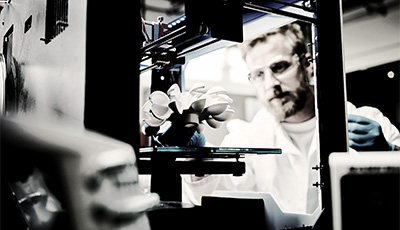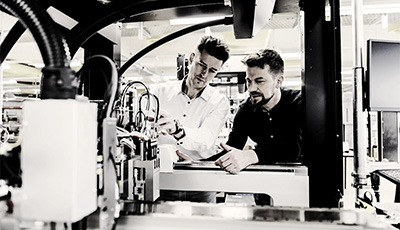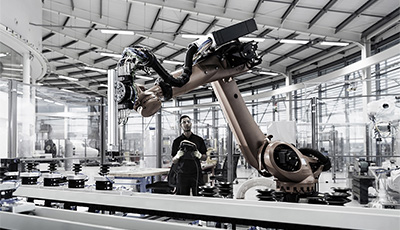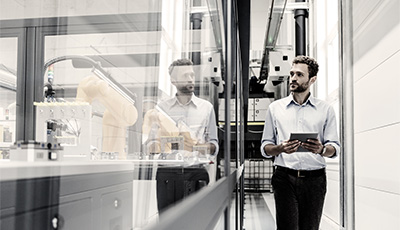Nearly ten years have passed since Japan's manufacturing sector began pursuing smart factories to enhance product quality and productivity. Over time, the scope of what constitutes a "smart factory" has expanded significantly—from digitizing internal factory and manufacturing processes to encompassing broader collaboration with supply chains, R&D, and design departments. Additionally, the range of applicable technologies has grown to include advanced innovations such as digital twins, replicating real-world environments in virtual spaces. This report explores the challenges that arise as these initiatives and technologies grow increasingly complex and diverse and offers insights into how companies can address them.
Manufacturing DX Report Part 1: Survey on the Current State of Smart Factories in Japan – Challenges Emerging Over the Past Decade
- Process
- High Technology
- Engineering Chain Management
- Smart Factory
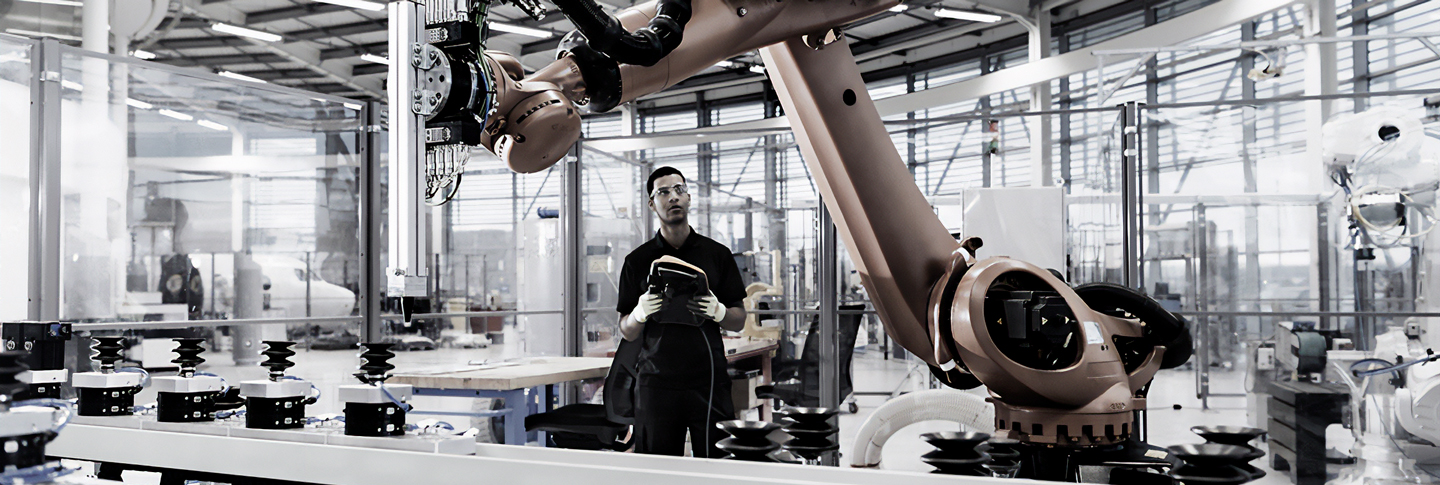
-

Satoshi Tachibana
Principal Head of Future Tech-value Innovation Strategy Unit -

Shingo Nakamura
Principal -

Takahiro Nishi
Director
1. Summary of Survey Results
ABeam Consulting conducted a survey targeting over 6,000 companies of various sizes and industries to assess the current state of smart factories in Japan. The findings revealed that fewer than 40% of companies are actively engaged in smart factory initiatives. Meanwhile, nearly half aim to achieve “full automation,” yet many are struggling to make meaningful progress.
The survey identified four common challenges across companies:
-
(1)
The vision for smart factories must be redefined.
-
(2)
Processes and layouts must be reimagined, not simply extended from existing ones.
-
(3)
Digital twins are a critical enabler.
-
(4)
Management needs to commit to activities and ensure proper resource allocation.
Challenges (1), (2), and (3) stem from the fact that many current smart factory initiatives merely apply digital technologies to existing operations and kaizen (continuous improvement) models.
When digital tools are overlaid onto legacy processes and factory layouts without fundamental redesign, automation costs tend to rise, performance gains fall short of expectations, and ROI (Return On Investment) fails to materialize, leading many efforts to stall.
The first essential step is to develop a clear vision of the factory of the future. This vision should then be translated into tangible changes to processes, layouts, business contents, operations, parameters, and production protocols (Operational Technology or OT). Digital twins are key in facilitating this transformation and should be utilized more proactively.
Furthermore, while many companies continue to target “full automation,” the survey revealed an increasing focus on integrating factory data with supply chain, design, and development functions. Since these initiatives extend beyond the factory floor and require cross-departmental collaboration, companies often lack sufficient execution resources. This highlights the need for leadership to elevate smart factory efforts from departmental projects to enterprise-wide initiatives, with adequate support and resource commitment.
2. Japan’s Smart Factory Journey Approaches Its 10th Anniversary
1) Evolution of Smart Factories and Expansion of Current Initiatives
A smart factory is generally defined as a factory figure that leverages advanced technologies, such as IoT, industrial robots, and AI, to collect and analyze vast amounts of data from manufacturing processes to improve productivity and operational efficiency.
The concept of Industry 4.0 was first introduced in Germany in 2011. In response, Japan’s Ministry of Economy, Trade and Industry (METI) released the “Smart Manufacturing Roadmap Survey” in 2017. At that time, smart factory initiatives in Japan primarily focused on three pillars: visualization, optimization, and automation at manufacturing sites.
Nearly a decade later, the scope of smart factory efforts has significantly broadened. These initiatives have evolved beyond the confines of the factory floor, extending into engineering chains and integration with supply chains, as illustrated in Figure 1.
2) Technological Advancements and Challenges Facing Today’s Manufacturing Sector
The range of technologies being adopted in smart factory initiatives continues to grow. Key developments include advancements in automation technologies, such as articulated robots and AGVs (Automated Guided Vehicles), as well as progress in digital twin technologies (see Figure 2).
These innovations are expected to play a critical role in addressing current management challenges. To better understand their real-world impact, we examined how these technologies are being implemented at actual factories and manufacturing sites, alongside specific examples of initiatives. Through this investigation, we also identified the key challenges manufacturers are currently encountering.
3. Survey on the Current State of Smart Factories
1) Survey Overview
The "Survey on the Current Status of Smart Factories" (hereinafter referred to as the Survey) was conducted via questionnaire on February 15–16, 2024, targeting individuals working in the manufacturing sector. The survey explored key themes such as:
- The vision for smart factories and current initiatives
- Challenges faced in ongoing smart factory projects
- The degree of management involvement in these initiatives
A total of 6,186 responses were collected. Of these, 50% came from companies with annual sales of ¥500 billion or more, and 35% were from companies exceeding ¥1 trillion in annual revenue (see Figure 3).
By industry classification:
- Discrete manufacturing (including machinery, equipment, semiconductors, electronic components, electrical components, and machine tools) made up 49.9% of responses
- Process industries (such as food and beverage, chemicals, and pharmaceuticals) accounted for 42.6%
- Other manufacturing sectors represented the remaining 7.5%
2) The “Current State” of Smart Factory Initiatives and Four Key Issues Identified
Currently, only 32.9% of companies surveyed are actively pursuing smart factory initiatives. Among those engaged, 45.7% are aiming for full automation. However, the survey revealed that these efforts are not progressing as expected.
Four common challenges emerged from the responses, highlighting critical obstacles hindering the advancement of smart factory initiatives (see Figure 4).
3) Detailed Survey Results
■ Current Status of Initiatives
(1) Smart Factory Initiatives Still in Early Stages
Currently, only 32.9% of all surveyed companies are actively working on smart factory initiatives. While there is a clear trend toward higher adoption among larger companies, even among enterprises with annual revenues exceeding ¥1 trillion, less than 40% have implemented smart factory efforts (see Figure 5).
(2) Automation as the Primary Goal of Smart Factory Efforts
Among companies pursuing smart factory initiatives, 45.7% identified the realization of full automation as their primary objective. This underscores automation as a central focus across industries.
However, in process industries—such as chemicals, steel, non-metals, and metals—there is a notable emphasis on the integration of factory data with supply chain data. This reflects the need to address the complex supply chains that characterize these industries (see Figure 6).
(3) Polarization in the Success of Smart Factory Initiatives
The survey revealed a growing divide between successful and struggling initiatives. More than 40% of companies reported that their smart factory efforts have not progressed as expected, with the exception of initiatives focused on passing down craftsmanship skills.
These results suggest that the success or failure of smart factory implementations is becoming increasingly polarized across the industry (see Figure 7).
■ Four Key Challenges
(1) Challenges in Achieving Full Automation: Reimagining Processes and Utilizing Digital Twins
To realize full automation, it is essential to go beyond existing processes and layouts and to actively leverage digital twins.
The top three challenges cited were:
- Lack of human resources to drive initiatives (19.5%)
- Limited budgets for such activities (17.5%)
- Insufficient improvements in productivity (10.9%) (see Figure 8)
Additionally, many free-text responses highlighted issues with existing production lines—for example:
- “Each factory produces different products.”
- “Production varies by site.”
These reflect a deeper challenge: the need for feasibility and ROI in processes that are difficult to automate and must support high-mix, low-volume production. In such cases, it’s not enough to pursue automation alone. What’s required is a fundamental redesign of processes, creating flexible models that can be replicated across multiple factory sites.
Despite their potential, only 15.7% of respondents reported actively using digital twins, which are essential for building and validating such scalable process models. This suggests shortcomings not only in the initiative's content but also in the utilized technologies.
(2) Issues in Linking Factory Data with Supply Chain Data: The importance of integrating use cases into data and system design
The top three issues identified were: "lack of human resources to promote activities" (20.8%), "insufficient data linkage and utilization" (12.7%), and "limited activity budgets" (9.7%). In the comments, frequent concerns included "problems with data systems" and "lack of future vision or reference models" (see Figure 9).
There are also cases among our clients where data collection and internal collaboration were initiated, but the impact remained unclear. In such situations, we often help redefine a “future vision” or “model case” and identify the relevant data systems before proceeding.
These comments suggest that many efforts remain fragmented and localized, and there is a lack of clarity on how the data will be used or what benefits it will deliver.
(3) Challenges in Linking Factory Data with Design and Development Data: Establishing a Shared Vision and Allocating Resources
The most frequently cited issues in integrating data between manufacturing and design/development functions were:
- Lack of human resources to promote activities (27.1%)
- Limited budgets for data-related technology (11.9%) (see Figure 10)
These challenges are consistent with those seen in other areas. However, respondent comments also pointed to issues such as:
- Lack of mutual understanding between factory and design operations
- Insufficient data and supporting technologies
These difficulties often stem from factories and design departments operating under different KPIs and workflows, even within the same organization.
To address this, it is important to establish a shared future vision for collaboration between manufacturing and design, including aligned KPIs and unified operational goals.
(4) The Role of Management Commitment: A Critical Success Factor for Smart Factories
Management involvement has a profound influence on the success of smart factory initiatives. Among respondents who reported that their executives had a strong understanding of and were actively engaged in smart factory efforts, 83.3% indicated that their initiatives were progressing well. This sharply contrasts with the 16.7% who said their efforts were unsuccessful (see Figure 11).
This result highlights that management commitment is decisive in determining whether smart factory transformations succeed or stall.
In our consulting engagements, we often encounter situations where companies begin by collecting internal data and attempting to link it without a clear strategic direction. These efforts tend to incur significant costs yet deliver uncertain results. In such cases, we typically advise clients to step back and reformulate a clear future vision or reference model and then align their data systems accordingly.
Even among companies where management is highly committed, many still cite critical constraints such as:
- Shortage of human resources
- Insufficient activity budgets (see Figure 12)
This indicates that commitment alone is not enough. For smart factory initiatives to succeed, executives must go beyond verbal support. They must also:
- Allocate sufficient budgets and personnel
- Secure cross-functional resources that support not only factory operations but also digital twin adoption and interdepartmental collaboration
Without these dedicated resources, even the most well-intentioned leadership efforts may fall short, leaving frontline teams to struggle with limited tools and capacity.
■Differences in Initiatives and Challenges Between Process and Discrete Industries
The survey revealed distinct differences in smart factory initiatives between process industries (such as petroleum, steel, non-ferrous metals, chemicals, etc.) and discrete industries (such as machinery, semiconductors, electronic components, electrical parts, machine tools, transportation equipment).
The percentage of companies targeting full automation in process industries was relatively low (see Figure 13). The two main reasons for this are:
- Process industries have long been engaged in smart factory-related efforts, including automation.
- Their production processes are already highly automated, reducing the need for major transformations.
On the other hand, discrete industries often pursue a broader range of objectives simultaneously, including automation, data linkage, and collaboration across departments. This tendency leads to issues such as a lack of resources and fragmented efforts.
In these cases, it is essential to:
- Clarify the factory's future vision
- Ensure alignment with frontline personnel
- Proceed with implementation based on a clear, step-by-step roadmap
Without a shared direction or proper sequencing, initiatives may become scattered, making it difficult to achieve meaningful results.
4. Framework for Realizing Smart Factories
■ Addressing the Four Key Issues
The four major challenges identified in the previous sections share a common root cause:
- A fundamental misunderstanding between the "study" phase and the "execution" phase, and
- An underestimation of the need to secure additional resources for successful execution (see Figure 14)
■ Defining the Vision: What Should a Smart Factory Be?
The typical implementation roadmap for smart factories follows the sequence:
“Visualization → Data Analysis → Automation.”
However, the key point is whether these efforts are based on a clear vision of the factory’s future.
Rather than jumping into activities, it is important first to define the desired future state and then work backward to determine the necessary OT (Operational Technology) environment and areas of focus (see Figure 15).
By doing so, each phase—from visualization to automation—can proceed in a way that is consistent with the factory’s overall direction.
5. Conclusion
This survey provided a comprehensive understanding of smart factory initiatives across manufacturing sites in various industries and company sizes, as well as the current challenges faced.
While most Japanese manufacturing companies aim for “full automation” in their smart factory efforts, the scope is expanding to include linking factory data with supply chains and integrating factory data with design and development data.
The survey also revealed a polarization between companies that are progressing well and those that are struggling. Among the latter, key challenges include the inability to revisit and clearly define the future vision of smart factories amid expanding initiatives, a lack of commitment, and an insufficient review of Operational Technology (OT) for automation. A significant factor hindering progress is the limited adoption of digital twins.
To advance smart factories effectively, companies must reassess their consideration steps, starting with a clear future vision of the factory and then specifying OT requirements accordingly.
Additionally, while management commitment is crucial, many companies face resource shortages, both in human capital and funding. As smart factory efforts evolve from digitizing and improving existing processes to cross-departmental initiatives involving such as “linking factory data with supply chain” and “linking factory data with design and development data”, it becomes essential for leadership to secure adequate resources and treat smart factories as a company-wide strategic priority.
■ ABeam Consulting’s Smart Manufacturing Support Service
ABeam Consulting supports clients beyond digitalization concepts, helping to solve production and process challenges through practical data utilization methods and concrete automation solutions (see Figure 16).
We remain committed to partnering with clients throughout the entire journey—from strategy formulation to implementation—to realize true business transformation through smart manufacturing.
Click here for inquiries and consultations



